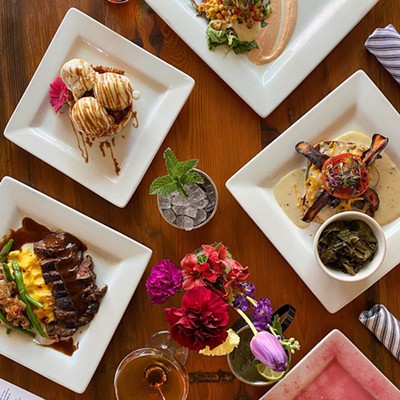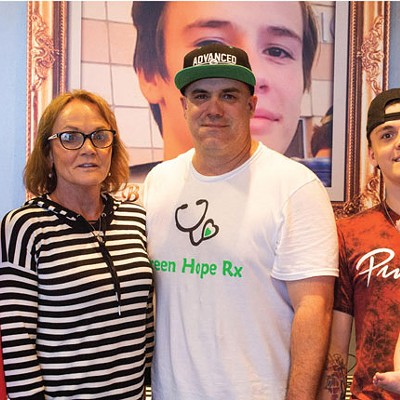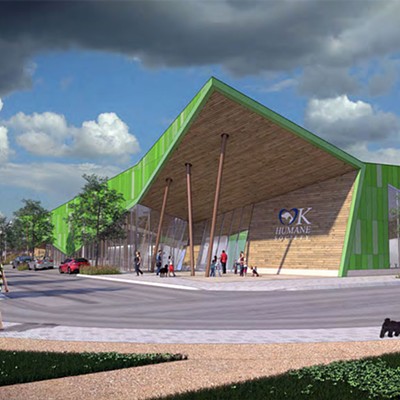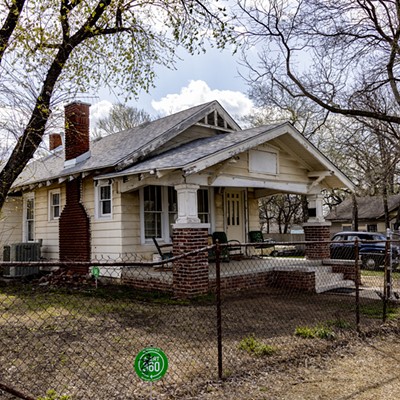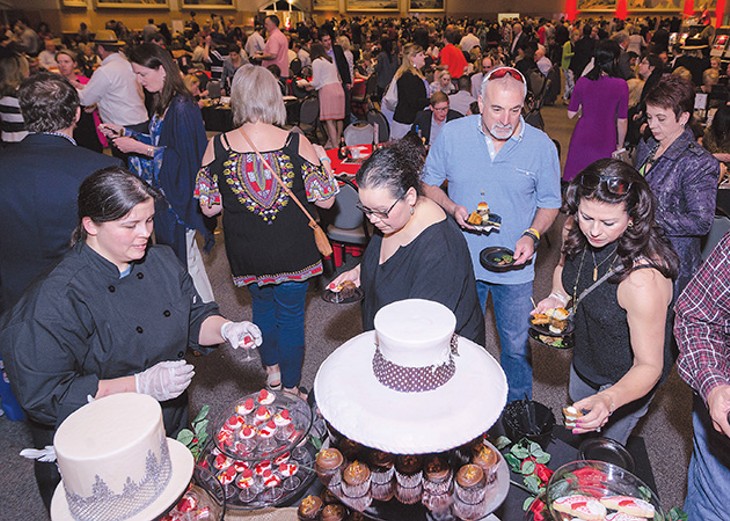
Federal employees just withstood the longest government shutdown in U.S. history. For 35 days stretching through the holidays and into 2019, Oklahomans who never considered themselves vulnerable to hunger suddenly faced empty pantries and depleted bank accounts.
“It is an unseen issue for a lot of people,” said Katie Fitzgerald, CEO of Regional Food Bank of Oklahoma. “Our entire country got a wake-up call that most Americans live paycheck to paycheck. If there is a major disruption to that income, it doesn’t take long before people get to that place where they need that help. We had a large-scale distribution on Martin Luther King Day and had 755 households come through. We had federal government employees who’d worked for up to 25 years and were in tears coming to us because they never thought they would ever need that help.”
Hunger is a hidden epidemic in Oklahoma according to Fitzgerald, who said that 62 percent of Oklahoma’s public school student body is eligible for free or reduced lunch programs. Oklahoma is also 51st in the nation ahead of District of Columbia for the lowest percentage of eligible students participating in a summer food program.
Chef’s Feast 2019, held 6:30 p.m. Friday at National Cowboy and Western Heritage Museum, 1700 NE 63rd St., is a critical fundraiser for Regional Food Bank to help grow its Food for Kids programs. Fitzgerald said that 40,000 unique students are served through the backpack program, the school pantry program, Kids Cafés, School’s Out and the Summer Feeding program. The annual price tag is roughly $2.5 million and serves 53 counties across the state.
“For those of us who haven’t experienced hunger and the economic insecurity that produces hunger, it’s hard to really understand the issue,” Fitzgerald said. “We live in this foodie culture where food seems ubiquitous, where people are purchasing food kits to arrive at their home at exorbitant prices that the people we serve could never afford to do.”
As Regional Food Bank’s mission grows, Chef’s Feast has evolved into a signature event drawing in some of the most talented chefs in the area. 19 chefs will be creating menus for this year’s Mardi Gras theme, all competing for the Foodie Favorite award. Elizabeth Speegle Band also performs live.
“Chef’s Feast is not a traditional gala,” Fitzgerald said. “It’s really fun, people are moving, there’s no long program, you get to eat and drink all night long. We show a little video so you can see the impact of the Food for Kids program, there’s a live auction and a big silent auction, a raffle with a lot of good items in it.”
The silent auction features original artwork including a backpack decorated by Desmond Mason; vacation getaways to Cancun, St. John and Palm Springs; and suites for upcoming Kenny Chesney and Ariana Grande concerts at Chesapeake Energy Arena. The silent auction is also extended beyond the event so those who are unable to attend Chef’s Feast can still bid online at chefsfeast.org.
Experiencing hunger
For those fortunate to have not experienced the difficulty of food insecurity, Regional Food Bank offers a hunger simulation at its volunteer center at 3355 S. Purdue Ave. in Oklahoma City. Participants can sign up for sessions that will last 30-60 minutes, and Fitzgerald said they are able to accommodate groups large and small. Each participant is given a unique persona they adopt as they try to feed their imaginary family a set number of calories per week.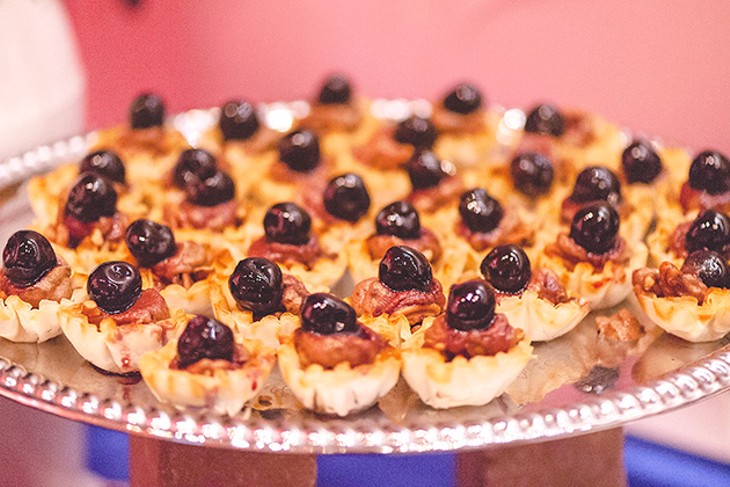
The simulation starts at a grocery store with a very limited budget and then moves to a Supplemental Nutrition Assistance Program (SNAP) office before concluding at a food pantry.
“We are simulating the struggle people have trying to provide for their family on a very limited budget,” Fitzgerald said. “You might get to the SNAP office to find that, even though you make very little, you still don’t qualify for Supplemental Nutrition Assistance. You might go to the grocery store and find that the cheapest food is the least nutritious food. If you are trying to get those calories, you are going to go for the cookies even though that’s really not what you’re trying to feed your family, obviously.”
Participants might opt to use their budget on better quality food like milk and various proteins, hoping to fill out the rest of their needed calories through donations at a food pantry, but not every participant will get there in time because of work schedules or not enough volunteers. So despite an enormous amount of effort, a family will still go hungry.
Operating in a largely rural state does not make the job of the Regional Food Bank easier, Fitzgerald said, but years of experience have allowed the organization to fine-tune its operations so it can work more efficiently through stronger buying power, distribution networks with local schools and programs and collaboration with federal programs. Food and monetary donations fill most of the gaps, but Fitzgerald said there still is a long way to go to ensure every child in Oklahoma has access to enough food.
The Backpack program is the most expensive, according to Fitzgerald, and serves elementary school kids identified by Food for Kids coordinators in participating schools as facing food insecurity and hunger. The School Pantry program is for middle school and high school students who can choose their own food they can also prepare at home. Kids Cafés and the Summer Feeding programs partner with various organizations to provide fully cooked meals for after-school and summer programs. Because of federal regulations, Fitzgerald said these meals have to be eaten on-site rather than taken home, so Regional Food Bank looks for partnerships with other organizations offering mentoring and programming to make it worth the family’s time to coordinate transportation.
“If you have 435,000 kids throughout the school year participating in a free or reduced program to get breakfast and lunch at school, what happens to those kids during the summer? They aren’t getting as much food,” Fitzgerald said. “We work really hard with our partners to offer more than just a meal in the summer, like enrichment activities. It is ideal if it can be offered to every kid in the community.”
Fitzgerald said Chef’s Feast has been effective at raising both funds and awareness for the programs because it is designed to celebrate the innovation and diversity of our culinary world and highlight how significantly food can impact people’s well-being.
“It’s easy to forget that hunger is a very real problem,” Fitzgerald said. “It may seem decadent, but this event allows people to appreciate the beauty and importance of food, but also remember that a lot of people don’t have that. It’s a helpful way to make that emotional connection to the role food plays in our lives.”
Visit regionalfoodbank.org.

